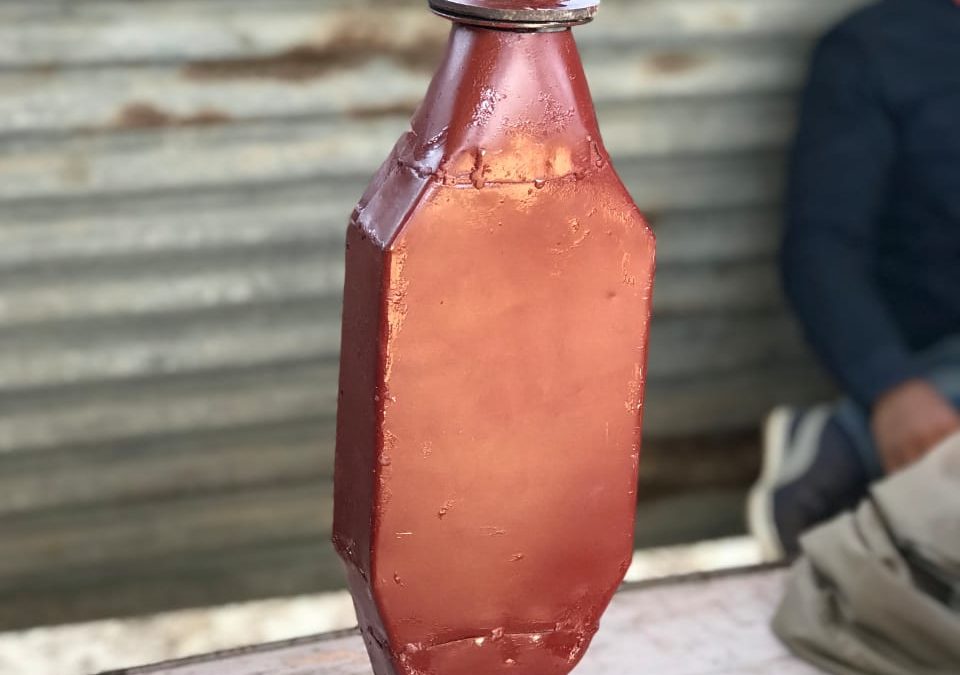While automobiles convey a sense of style, speed and power, we also have to realise the impact they have on the environment. In light of this, Baja NITK Racing is proud to present our very own catalytic converter, synthesized from scratch. Our motivation behind this was to implement an affordable equipment that would enhance the efficiency of our ATV and also decrease the detrimental effects on the environment significantly. A catalytic converter is a device that is used to reduce the emissions from the internal combustion engine. It provides a site for the oxidation and reduction of toxic by-products of the fuel like nitrogen oxides, carbon monoxide, and hydrocarbons into less hazardous substances such as carbon dioxide, water vapor, and nitrogen gas. We have employed a compact catalytic converter with three compartments for catalytic action, the synthesis process of the catalyst and dip coating process of the catalyst on the ceramic cloth.
About the Catalyst
We have used the metal Ceria to build the catalytic converter as it is economical and efficient. The use of Ceria is unique to BNR, and implementing this metal in place of platinum is an economical and one of the best among all the technologies present to control automotive exhaust emissions. Ceria based materials have high oxygen mobility and oxygen storage capacity and hence have a wide application in the field of catalysis. Zirconia is also added to form a ceria-zirconia solid solution which optimizes the thermal stability even at high temperatures. Rare earth metal oxides are doped into the ceria-zirconium solution to form a Ce-Zr-RE system. We use Praseodymium (Pr) as the rare earth metal in order to oxidise CO efficiently. The final catalyst is Ce0.65Zr0.25Pr0.102-δ.
The Working
The three basic reactions that occur in the converter are:
- Reduction of nitrogen oxides into elemental nitrogen and oxygen:
xNOx→ Nx + xOx
- Oxidation of carbon monoxide to carbon dioxide.
2CO +O2 → 2CO2
- Oxidation of hydrocarbons into carbon dioxide and water.
CxH4x+2xO2→xCO2+2xH2O
The monolithic structure, made of ceramic is first wash coated with Zirconium solution and dried. It is then dipped in the Ceria- zirconium catalyst solution and dried in order to remove all the volatile components. The final dried monolith is free from any impurities and volatile matter. Pure catalyst powders are die casted with ethanol to form pellets which are then kept in a hot air furnace to make it more porous and to improve its catalytic activity. The catalyst core is the ceramic monolith with a honeycomb structure.
The catalytic converter consists of three sections for redox reactions with exhaust gases. The first and third chambers contain honeycomb substrates and the second chamber contains pellets. The exhaust gas enters through the inlet and divides into two sections to enter the honeycombs. We have used a ceramic wool for insulation in order to reduce the heat lost to the surroundings. Hence there is no necessity for external heating thereby reducing the cost and complexity of the system.

The Catalyst for Change
While we continue to chase our passion towards building a competitive ATV, we are also conscious of the fact that a balance has to be maintained to make it eco-efficient. It is our endeavor to leverage the best available technology and resources within our reach. We believe that the environment is one of the paramount aspects of our lives and it is essential that we allow it to thrive for our own well-being. This project is our attempt towards reducing our carbon footprint and giving back to mother nature.

The off-road racing team of NITK comprising of Btech undergraduates who build and race ATVs at the annual SAE BAJA India event.



